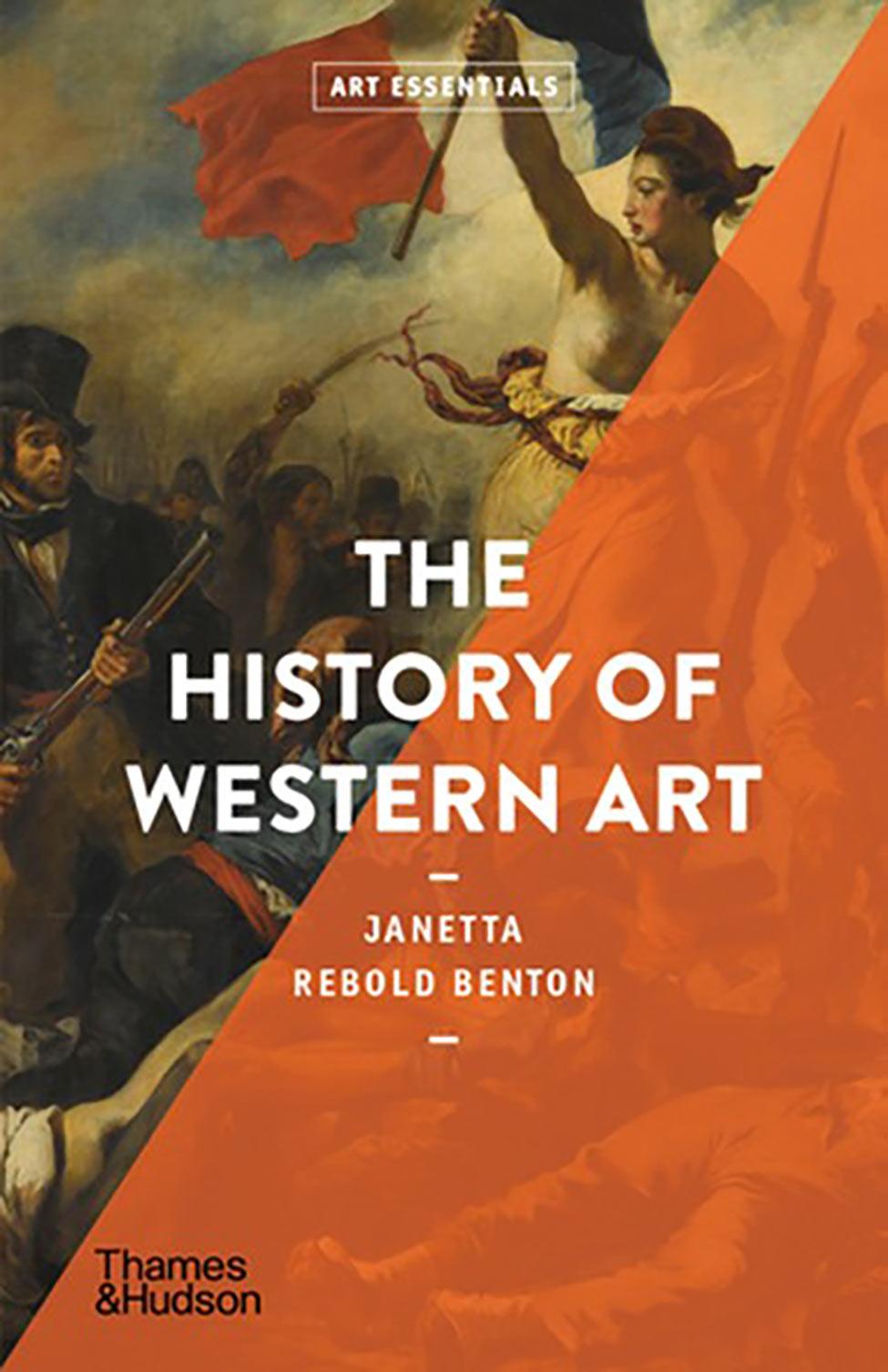

The History of Western Art
Janetta Rebold Benton, PhD
Distinguished Professor, Art History

What is the central theme of your book?
Emphasizing the history in art history, each of The History of Western Art‘s twelve chapters opens with a question to ponder. Following is a summary of the major historical developments of the period, touching on social structure, political organization, religious beliefs, scientific advances, and customs. These themes are explored from prehistoric Stonehenge to Frank Gehry. The visual arts are shown to simultaneously shape and document the culture of the time and place they were created. A secondary focus explores constantly evolving aesthetic preferences that swing between naturalism and abstraction, with each era and style either rebelling against the previous or seeking to improve it.
What inspired you to write this book?
This book derives from the seemingly countless times I have taught the two-semester survey of Western art course, as well as lectures I have presented at the Smithsonian, Metropolitan Museum of Art, Pace’s Schimmel Center, the 92nd Street Y, and elsewhere in the US and abroad as the expert lecturer on trips for the Smithsonian and the Metropolitan Museum of Art .
Why is this book important in your field? What does it contribute to the current body of knowledge on this topic?
This book fills a gap because art history is routinely written with only superficial regard for the historical events that precipitated, or resulted from, art and architecture. The visual arts provide irrefutable evidence of the past; a picture really is “worth a thousand words.”
Were students involved in any research related to your book
My students provided the feedback that enabled me to shape this book. Through their responses and questions, I learned how to clearly explain concepts, how to accurately describe works of art, and which of these they found most interesting.
Tell me about a particularly special moment in writing this book.
I was delighted to learn that, in addition to American and British English editions, this book would be published in Latvian (Jāna Rozes apgāds, Riga), German (Midas Verlag, Zurich), and Spanish (Arte Blume, Barcelona).
What is the one thing you hope readers take away from your book?
Richard Cork, formerly chief art critic for The Times, wrote, “As well as providing perceptive comments on key individual works of art and architecture, Janetta Rebold Benton gives us a very precise understanding of their historical contexts.”
Is there anything else you would like to share about your book?
I presented a series of four lectures based on How to Understand Art for Smithsonian Associates and would be interested in doing the same with The History of Western Art.
What other books have you published?
How to Understand Art, Thames & Hudson, 2021 (176 pages, 111 illustrations); editions in French (Flammarion, Paris), Italian (24 Ore Cultura, Milan), German (Midas Verlag, Zurich), Latvian (Jāna Rozes apgāds, Riga), Spanish (Art Blume, Barcelona), and Chinese (Domain Publishing Company, Taiwan).
Arts and Culture: An Introduction to the Humanities, co-authored with Robert DiYanni, Pearson/Prentice Hall, Upper Saddle River, NJ; fourth edition, 2012 (vol. I, 540 pages, 294 illustrations; vol. II, 498 pages, 289 illustrations; combined vol., 670 pages, 537 illustrations); Chinese translation, fourth edition, Tsinghua University Press, Beijing, 2020, forthcoming; Chinese translation, second edition, 2011.
Handbook for the Humanities, co-authored with Robert DiYanni, Pearson, Upper Saddle River, NJ, 2014 (450 pages, 443 illustrations, published in paperback and as e-book), Chinese translations, 2016, 2019.
Materials, Methods, and Masterpieces of Medieval Art, Praeger Series on the Middle Ages, Praeger Publishers Imprint Publication, Greenwood Publishing Group, ABC-CLIO, Santa Barbara, CA, 2009 (306 pages, 73 illustrations, published in hard cover and as an e-book).
Medieval Mischief: Wit and Humour in the Art of the Middle Ages, The History Press (Sutton Publishing Ltd.), Thrupp, Gloucestershire, 2004 (176 pages, 165 illustrations).
Art of the Middle Ages, World of Art series, Thames & Hudson Ltd., London, and New York, 2002 (320 pages, 250 illustrations).
Holy Terrors: Gargoyles on Medieval Buildings, Abbeville Press, New York, 1997, fifth printing; French edition, Saintes Terreurs: les gargouilles dans l'architecture médiévale, Éditions Abbeville, Paris, 1997, second edition, 2000 (140 pages, 108 illustrations).
Medieval Monsters: Dragons and Fantastic Creatures, exhibition catalog, Katonah Museum of Art, Katonah, NY, 1995 (39 pages, 94 illustrations).
The Medieval Menagerie: Animals in the Art of the Middle Ages, Abbeville Press, New York, 1992 (Book of the Month Club selection); French edition, Bestiaire Médiéval: les animaux dans l'art du moyen age, Éditions Abbeville, Paris, 1992 (191 pages, 151 illustrations).
The visual arts provide irrefutable evidence of the past; a picture really is 'worth a thousand words.'
Fun Facts
When did you join Dyson?
September 1986, upon moving back to the US after 4+ years in Paris.
What motivates you as a teacher?
I love the students!
What do you do in your spare time; to relax/unwind?
As the pandemic wanes, I have returned to traveling—as the expert lecturer on trips for the Smithsonian, and to visit family in the US and abroad. My grandchildren now live in England and France.
What are you reading right now?
Information that I hope to use in my eleventh book.